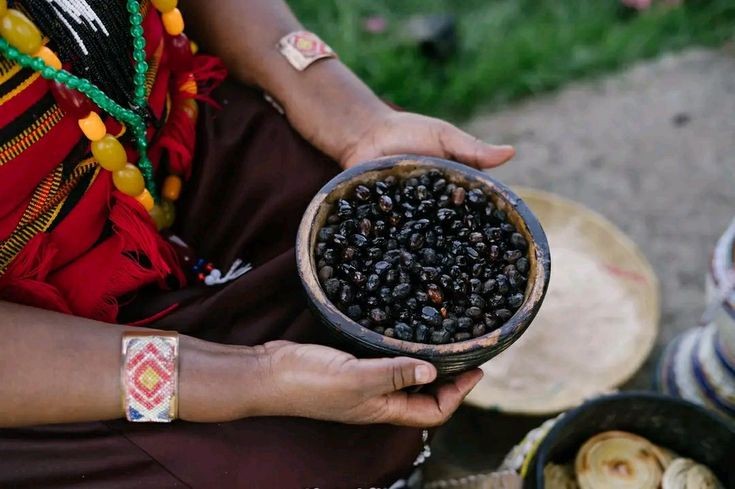Ever since the legendary goat herder Kaldi discovered coffee in Ethiopia’s Kaffa region, the tradition of coffee has been woven into the lifestyle of Ethiopians. From the households of modern cities to the villages of remote tribes in the Omo Valley, coffee is not just a drink; it’s a lifestyle.
Across Ethiopia, coffee is seldom consumed for its caffeine. Instead, people gather to enjoy a cup of coffee to connect and share stories. Just as the small “sini” cups are arranged on the “rekebot” serving table, neighbors, friends, and family come together for a coffee ceremony to cherish this precious gift of Ethiopia.
Here are some of the unique coffee cultures practiced in different parts of Ethiopia. So grab a cup of coffee and read along!
1. Shoforo Coffee in the Hamer Tribe
The Hamer, one of the largest tribes in Ethiopia’s south Omo Valley, use only the husk of the coffee cherry, creating a tea-like beverage. The boiled coffee husk is served in a gourd made from a calabash tree and is shared among neighbors and family, with each person taking turns sipping from the same gourd.
2. Buna Qella in the Borana
In the Borana region, coffee beans are boiled in melted butter, creating Buna Qella, often reserved for esteemed guests. The butter-soaked beans are served in clay gourds and passed around, starting with the elders.
3. Kuti Shay in Harar & Southern Ethiopia
Historically, Ethiopian farmers set aside their harvested coffee for trade or special ceremonies. Instead of drinking coffee, they enjoyed “Kuti,” a tea made from coffee leaves.
Kuti is prepared by boiling coffee leaves in hot water, often with a pinch of salt or sugar.
Whether you are in the modern coffee shops of Addis Ababa or under the traditional huts of the tribes in the Omo valley, enjoy the flavors of coffee in the land of origins.
Text and photos by Michael Metaferia
instagram.com/michael.metaferia

